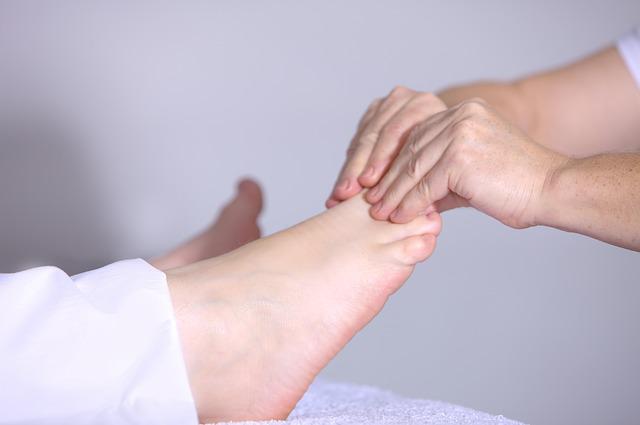Foot Care Tips for People with Diabetes

Don’t you just love a good summer pedicure? There is something about taking care of your feet and seeing them looking their best that makes you feel on top of the world. But for people with diabetes, foot care is more than just a beauty statement. Proper foot care is essential to preventing serious health complications. So, if you are diabetic, read on for some tips on how to take care of your feet. You will be glad you did!
Regularly Check Your Feet
As a person with diabetes, it’s important to inspect your feet every day. Diabetes can cause nerve damage and problems with blood circulation, which can lead to foot problems. Inspecting your feet daily can help you detect problems early so you can get treatment and avoid more serious problems. Here’s how to check your feet:
First, wash your feet with soap and water, then dry them thoroughly. Next, using a mirror, look at the tops and bottoms of your feet and between your toes. Check for cuts, bruises, blisters, redness, or any other changes. If you see anything unusual, contact your healthcare provider. Finally, gently feel your feet for any lumps or bumps. If you find anything unusual, don’t try to remove it yourself, contact your healthcare provider for help.
Make Use of Diabetes Shoes for Maximum Comfort
Diabetic footwear is designed to provide support and protect your feet from further injury. Good orthopedic shoes should be comfortable, fit well, and provide support and cushioning for your feet. Shoes that are too loose or too tight can rub and cause irritation, while shoes that don’t provide enough support can lead to heel pain and other conditions. When choosing diabetic footwear, it’s important to consult with a podiatrist or other healthcare provider to make sure you’re getting the right shoe for your foot type. With proper care, diabetic shoes can help you keep your feet healthy and avoid further injury.
Anodyne provides shoes for diabetics that are specifically designed to meet the needs of people with diabetes. With years of experience in the field, Anodyne is a leader in providing high-quality diabetic shoes that can help keep your feet healthy. Our shoes are designed to protect your feet and lower legs from serious foot problems and issues that can occur because of diabetes. Anodyne shoes have features that accommodate a plethora of conditions, such as bunions or hammertoes. In addition, Anodyne shoes often have seamless padding to protect your feet from sore spots, and they are made of breathable materials to help keep your feet dry.
Don’t Go Barefoot
Diabetics have to take extra care of their feet. This is because diabetes can lead to neuropathy, which is a loss of feeling in the feet. This means that diabetics may not feel a cut or blister on their feet, which can lead to an infection. Infections can be extremely serious for diabetics, and even a small infection can lead to amputation if it’s not treated quickly. That’s why it’s so important for diabetics to take care of their feet and never go barefoot. Going barefoot puts diabetics at risk of cuts and scrapes that they may not feel, and this can quickly lead to serious infections. So even though it may be tempting to go barefoot on a hot day, it’s just not worth the risk for people with diabetes.
Keep Your Feet Dry and Comfortable
If you have diabetes, one of the most important things you can do is to keep your feet dry. Excess moisture can lead to fungal infections, which are difficult to treat and can cause serious complications. It can also soften the skin, making it more susceptible to cuts and wounds. When your feet are dry, it’s easier to spot potential problems early and take steps to prevent them from becoming serious. Here are a few tips for keeping your feet dry:
- Wash your feet every day with soap and water. Dry them thoroughly, especially between the toes.
- Wear shoes that fit well and allow your feet to breathe. Choose socks with slight compression and make of moisture-wicking, breathable materials.
- If you live in a humid climate, use a fan or air conditioner to keep your feet cool and dry.
Don’t Forget to Visit Your Podiatrist Regularly to Make Sure Your Feet Are Healthy!
Feet are especially vulnerable to complications from diabetes, including nerve damage, infections, and ulcers. These problems can lead to serious infections and potentially amputation if left untreated. A podiatrist can help to identify and treat problems early before they become serious. They can also provide advice on how to care for your feet and prevent problems from developing in the first place. If you have diabetes, be sure to see a podiatrist regularly to keep your feet healthy.
Low Impact Exercises
Low-impact exercises are ideal for people with diabetes, as they help to maintain joint health and overall blood flow. By keeping the joints healthy and mobile, low-impact exercises help to reduce the risk of developing foot problems in the first place. In addition, by promoting blood flow and keeping the muscles active, these exercises can also help to speed up the body’s ability to heal itself.
There are many different types of low-impact exercises that can be beneficial for people with diabetes, so it is important to find one that suits your individual needs and abilities. Walking, swimming, and even light yoga can all be excellent options. The most important thing is to make sure that you are moving your body on a regular basis. Exercise is an essential part of maintaining good health for people with diabetes – so get out there and get moving!
Final Thoughts
Caring for your feet is essential if you have diabetes. This means keeping them clean and dry, wearing shoes that fit well, and visiting a podiatrist regularly. Low-impact exercises are also important for maintaining joint health and preventing complications. By following these tips, you can help to keep your feet healthy and avoid serious problems down the road.
Read more interesting articles at usamagazinehub





